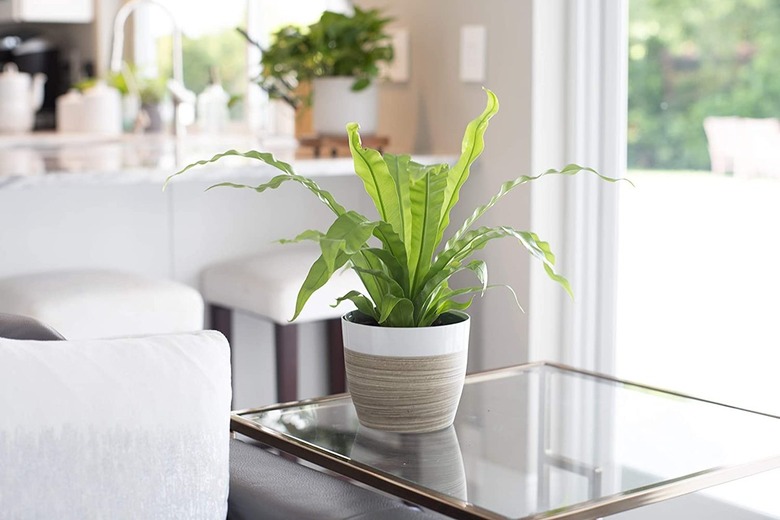Why Are The Edges Of My Bird's Nest Fern Turning Brown?
We may receive a commission on purchases made from links.
If you go looking for bird's nest ferns in their native environment of the tropical rain forest, you'll find them high above the ground growing on trees in Hawaii, Polynesia, and Australia. They are epiphytes or air plants that don't need to get nutrients from soil to survive. They are also popular houseplants with bright green leaves growing from the center of a rosette. If those leaves turn brown, it usually indicates a cultural problem.
Tip
Brown leaves on bird's nest ferns result from any of a number of cultural issues, from underwatering to excess fertilizer.
Meet the Bird's Nest Fern
Meet the Bird's Nest Fern
Bird's nest ferns (Asplenium nidus) are slow-growing ferns with erect, wavy, apple-green fronds with black midribs. The fronds are stemless and are shaped like spoons with spores appearing on the underside. These ferns are large, growing up to 4 feet long in nature on tree trunks in rain forests. They unfurl from a tight center that looks something like a bird's nest.
Hardy in U.S. Department of Agriculture plant hardiness zones 10 to 11, bird's nest ferns make attractive and impressive landscape plants, and they are also popular houseplants. When kept in a pot indoors, the fern remains smaller, and the fronds usually do not grow more than 2 feet tall.
Care for Your Bird's Nest Fern
Care for Your Bird's Nest Fern
Few ferns would make the drought-tolerant plant list. Bird's nest fern is no exception, and it requires regular irrigation to keep the soil or growing medium moist. This is probably the most important thing to remember when growing a bird's nest fern: It needs warmth, water, and humidity. The optimal temperature for the fern's growth is 70 to 90 degrees Fahrenheit. If you are keeping a bird's nest fern as a houseplant, it's a good idea to site it in a warm, humid room, like a bathroom. Otherwise, mist it regularly.
Bird's nest ferns also need a well-drained growing medium and some indirect sunlight. They tolerate a moderate amount of shade, but their fronds will crisp in direct sun. Use a diluted water-soluble solution once a month or so but only when the fern is actively growing.
Understand Cultural Care Issues
Understand Cultural Care Issues
If the bird's nest fern is not happy with its environment, it may display this in its fronds. Fronds will turn brown around the edges if they are exposed to direct sunlight. Too much fertilizer or fertilizer that is too strong can also cause leaf tip burn, resulting in brown or yellow fronds. If a fern is hit with a cold draft from a window, the leaves can react by turning brown along the edges. Fronds naturally die back as well, at which point they turn brown.
